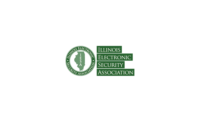UL released new requirements to smoke alarm standards. These standards now include criteria that address smoke characteristics between a fast-moving and smoldering fire, and the flammability of materials in modern household products. As well, the organization celebrated the grand opening of its new, state-of-the-art Smoke Detection Test Laboratory in Northbrook, Ill., on February 8.
The new standards were released in July of 2017, and alarms meeting these standards should be available by spring of 2018, while all new smoke alarms will be required to meet the standard by 2020 to be UL-certified.
Barbara Guthrie, vice president of corporate social responsibility at UL, who has been involved in standards development with UL for more than 30 years and recently served as UL’s chief public safety officer, said the new standards are based on a better understanding of the science of smoke and address the changing nature of homes, which have a more open layout than they used to and are made of and filled with lighter, synthetic materials that burn faster and hotter than homes burned in the past.
“The ability to dissect, understand and create greater algorithms of data have led us to the last 10 years of research, helping us understand ‘What is smoke?’” Guthrie said. “And that’s really the foundation and premise that lead up to these changes in requirements, and really the advancement in public safety.”
Guthrie said that in their research, they have uncovered the breakdown of what smoke is — what the particles are, what the particle sizes are and how the weight, density and movement of the particles change because of the source of the smoke. “It was important to understand, it’s not just foggy air, but it truly is a breakdown of discreet elements. [The new detector] is such a smart device now that is can analyze when to go off and when not to go off to provide the greatest amount of time for a family to get out of a home as quickly as possible.”
Historically, she said, given the old setup of homes and the carbon-based materials, people had about 17 minutes to get out of their homes. “Now, we know you have about three to four minutes to get out. That’s how fast and hot these new fuels burn. You’re taken over far too quickly by smoke inhalation. These new detectors will respond within roughly two-and-a-half to three minutes.”
Guthrie said after gaining a better understanding of smoke, UL wanted to help drive the design of products that addressed all aspects of that smoke and the modern homes these products will be installed in. “Houses are much larger now,” she said. “They have open atriums and great rooms; there’s a different kind of flow to the air. Also, our materials have changed: they’re lighter, they’re cheaper, and they’re made of synthetic as opposed to natural wood. Unfortunately this means they burn faster and hotter.”
She said UL discovered that three out of every five deaths in a house fire occur because the alarms are disabled or nonexistent. “The disabled alarms were very troubling because this meant that people knew there were these smoke alarms creating annoying sounds when they were cooking, and they started taking out batteries; then they are no longer a life-saving device.”
The standards are also meant to address the nuisance alarms triggered by cooking that led many people to ignore their smoke alarms or remove the batteries. Modern smoke alarms will now be truly smarter, Guthrie says, and will be able to detect smoke that leads to fire without over-detecting, and differentiate that dangerous smoke from the smoke of, for instance, overcooked popcorn.
In addition to using paper and wood, UL used polyurethane foam to represent the modern materials being used in homes and tested them for both flaming and smoldering fires. In contrast, using broiled hamburgers and popcorn, among other things, UL was able to create technology that could differentiate between actual danger and nuisance cooking alarms. The testing also took into account the different sizes and layouts of modern kitchens, with an eye on the ideal placement of alarms to detect and warn families of danger as quickly and accurately as possible.
UL used a collaborative process to create these standards. “We decided it is very important for UL not just to publish requirements but to go through the ANSI [American National Standards Institute] process,” she said. “This means you have all the constituents together, and you work to drive the standards and vote on it to become the ANSI standard. That makes certain that everybody and all manufacturers work to comply with the ANSI standards.”
Guthrie said the laboratory is a state-of-the-art facility that opened in January of 2018. “I expect we will see alarms [meeting the new standards] on the market by spring.”




